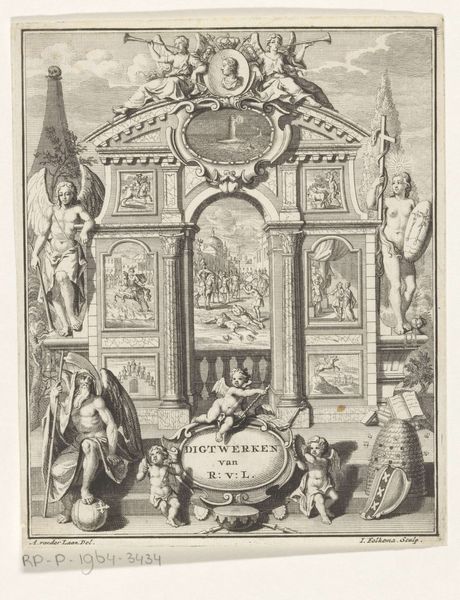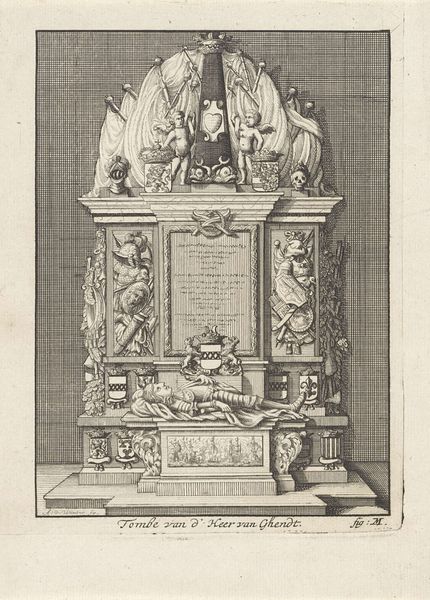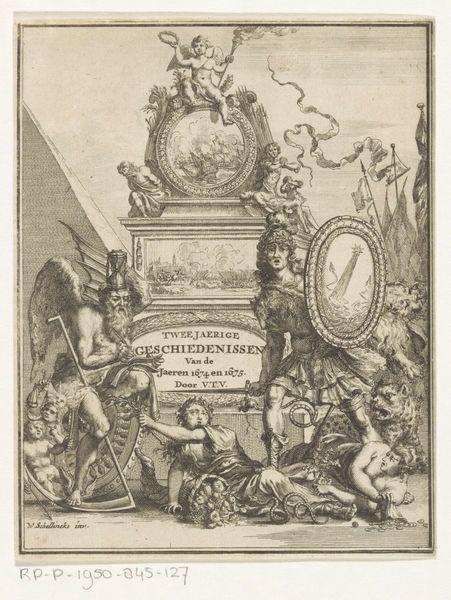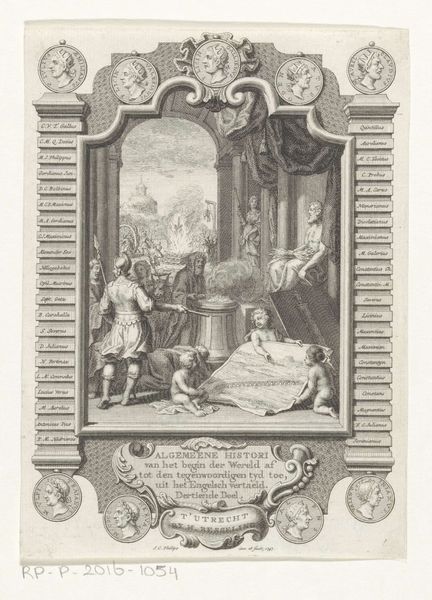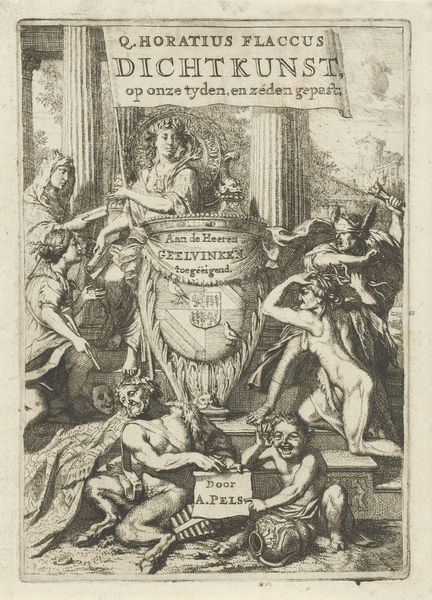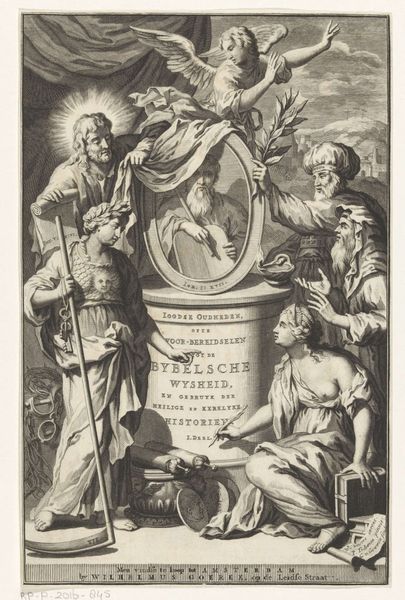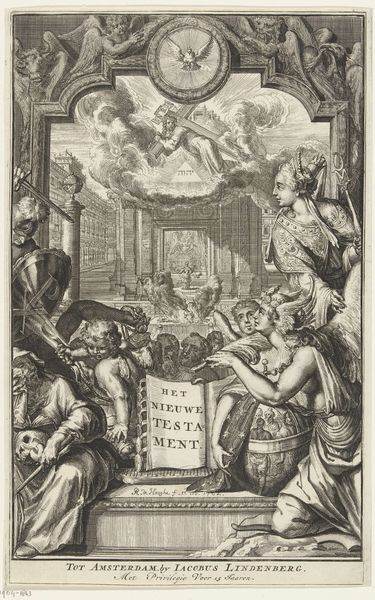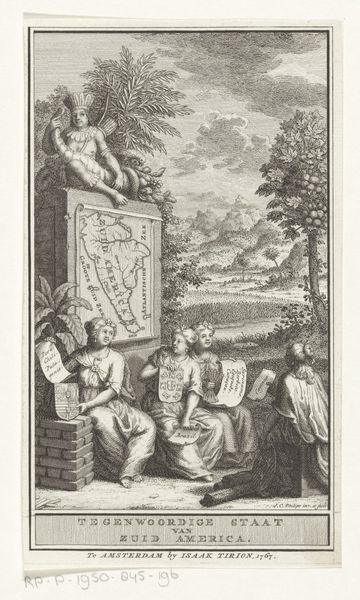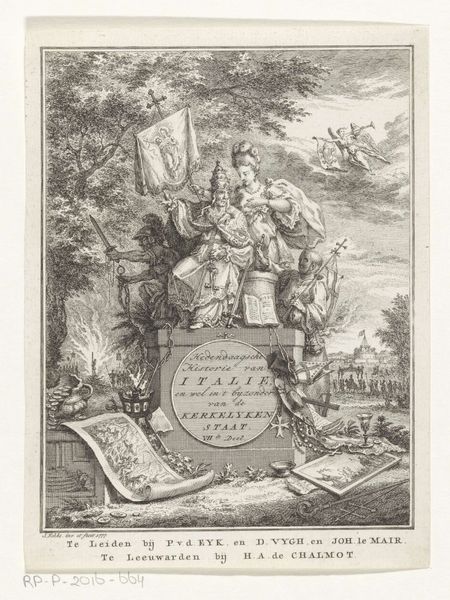
print, engraving
#
baroque
# print
#
landscape
#
figuration
#
line
#
cityscape
#
genre-painting
#
history-painting
#
engraving
Dimensions: height 141 mm, width 116 mm
Copyright: Rijks Museum: Open Domain
Curator: Pieter Tanjé created this engraving titled "Handelaren en Mercurius naast het wapen van Holland," sometime between 1716 and 1761. It's currently held here at the Rijksmuseum. Editor: Immediately, I'm struck by the sheer density of the composition. The close hatching and intricate linework lend a remarkable texture. You can almost feel the wool of those sheep! Curator: Indeed. The piece encapsulates Dutch Golden Age aspirations, visually intertwining commerce, civic identity, and classical mythology. Note the merchants gesturing towards the coat of arms of Holland, while Mercury, god of trade, stands confidently beside it. Editor: It’s a fascinating mix. Tanjé highlights how closely tied the material prosperity of Holland was with its image and self-representation. What materials were these merchants trading, I wonder? The engraving points toward very active local production. Curator: The presence of livestock, alongside what appear to be bolts of cloth and other goods, underscores the agrarian foundations supporting the mercantile success. Think of the wool trade with England, for example, or the linen industry booming at this time. The placement alongside the arms of Holland firmly anchors that economy to the city’s reputation. Editor: Absolutely. It emphasizes labor—the labor to produce goods, and then the labor of transforming and moving those goods across markets. You can almost imagine the engraver's painstaking work, line after line, to depict such fine detail. Curator: The baroque stylistic choices also play a vital role. The dynamism and richness served to visually reinforce Dutch power and influence on the world stage during this period, making this print much more than a simple record of economic exchange. Editor: It speaks to a controlled aesthetic and a confidence about industry as identity, all intertwined with artistic production. Tanjé and the printers saw this as a symbol of their work, too. Curator: And the prints themselves functioned as tools of promotion. Distributed widely, they projected an idealized image of Dutch trade, governance, and society, both within and beyond its borders. Editor: So, in essence, Tanjé used material production in ink and paper to propagate a very specific message. It makes you think about how carefully these images were curated. Curator: Precisely. Tanjé created a lasting symbol of Dutch commercial prowess, one carefully positioned within the cultural and political landscape of its time. Editor: A powerful and lasting visual representation of commerce made manifest through artistry and materials!
Comments
No comments
Be the first to comment and join the conversation on the ultimate creative platform.
